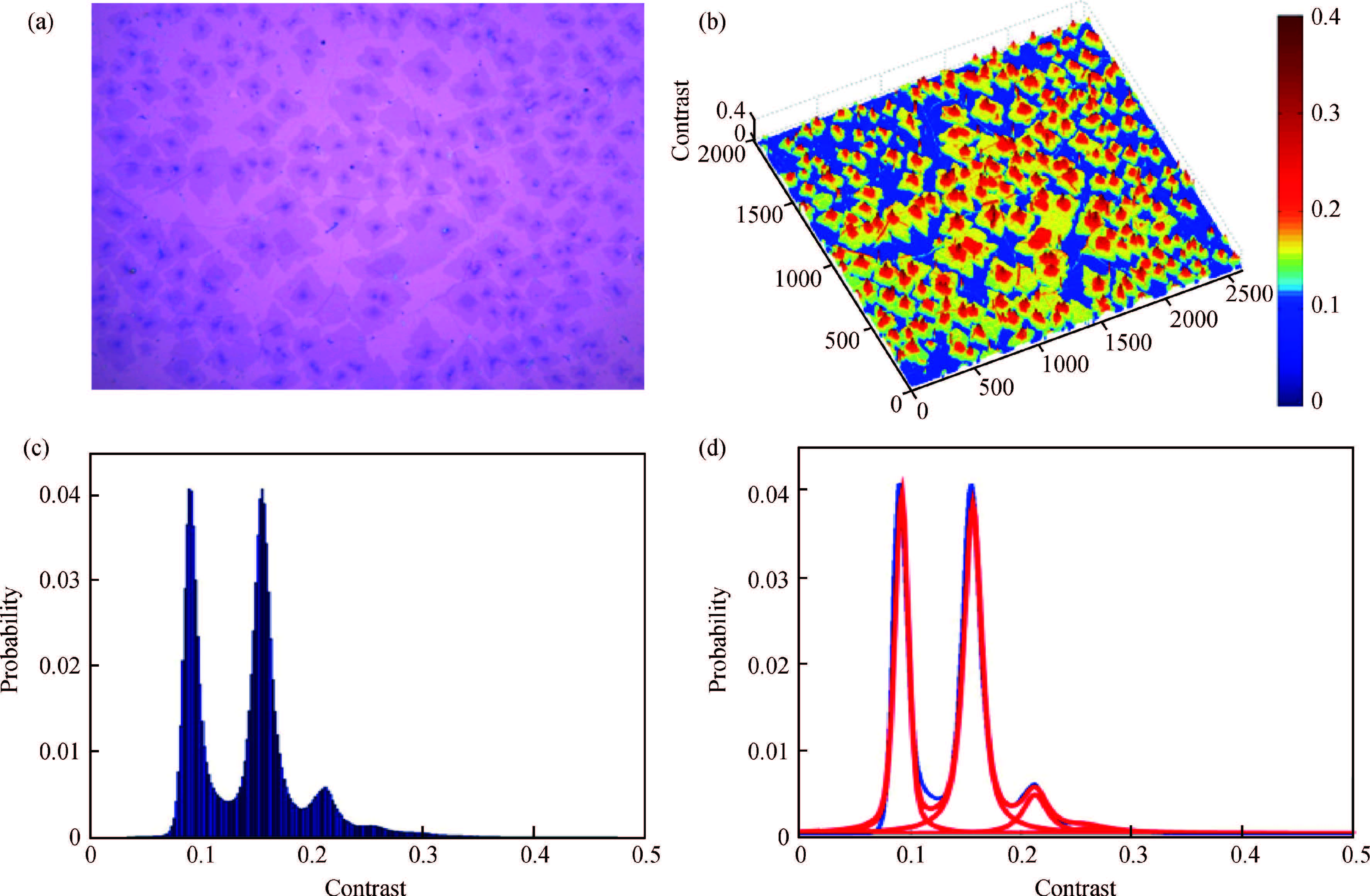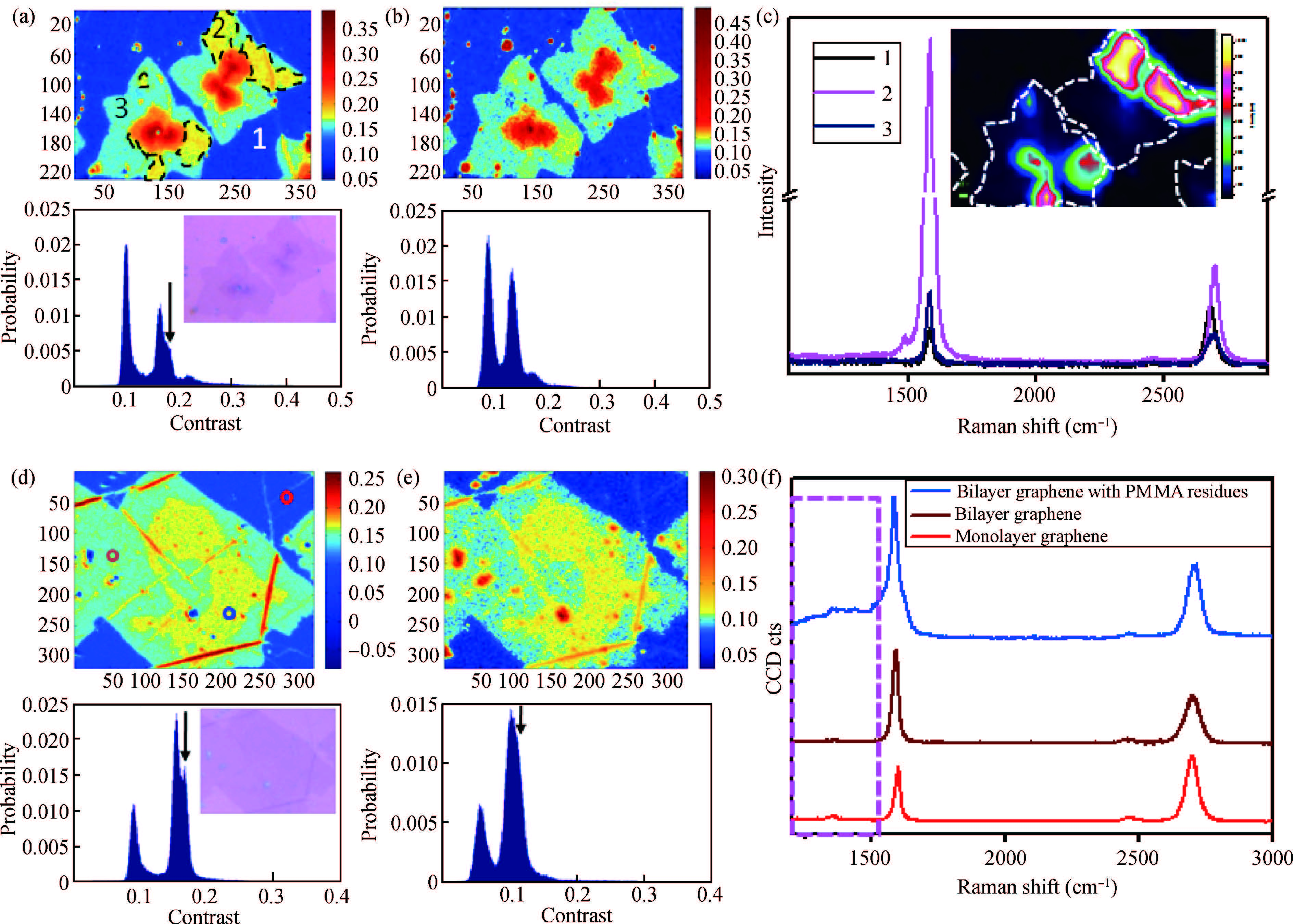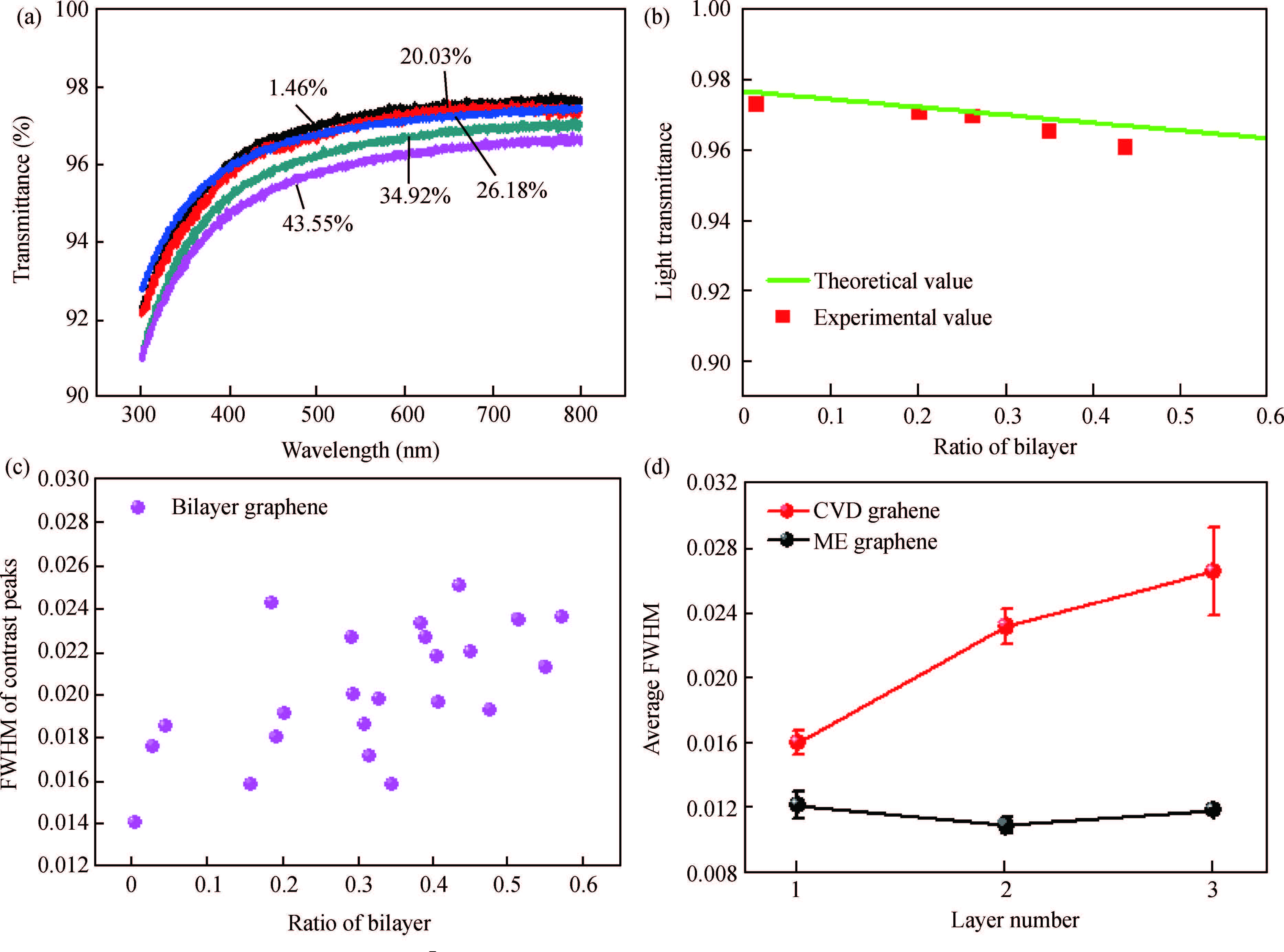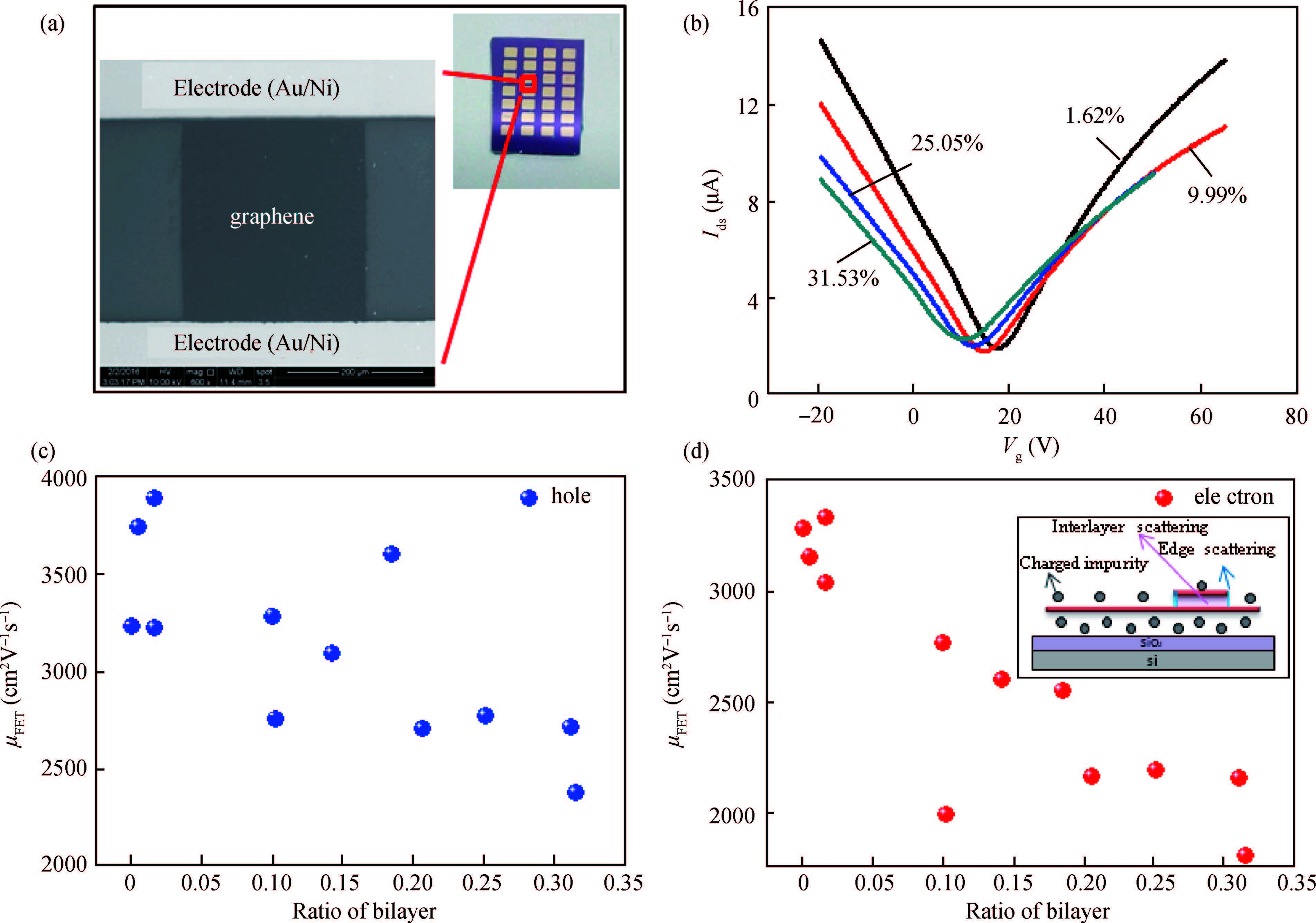| Citation: |
Yuanfang Yu, Zhenzhen Li, Wenhui Wang, Xitao Guo, Jie Jiang, Haiyan Nan, Zhenhua Ni. Investigation of multilayer domains in large-scale CVD monolayer graphene by optical imaging[J]. Journal of Semiconductors, 2017, 38(3): 033003. doi: 10.1088/1674-4926/38/3/033003
****
Y F Yu, Z Z Li, W H Wang, X T Guo, J Jiang, H Y Nan, Z H Ni. Investigation of multilayer domains in large-scale CVD monolayer graphene by optical imaging[J]. J. Semicond., 2017, 38(3): 033003. doi: 10.1088/1674-4926/38/3/033003.
|
Investigation of multilayer domains in large-scale CVD monolayer graphene by optical imaging
DOI: 10.1088/1674-4926/38/3/033003
More Information
-
Abstract
CVD graphene is a promising candidate for optoelectronic applications due to its high quality and high yield. However, multi-layer domains could inevitably form at the nucleation centers during the growth. Here, we propose an optical imaging technique to precisely identify the multilayer domains and also the ratio of their coverage in large-scale CVD monolayer graphene. We have also shown that the stacking disorder in twisted bilayer graphene as well as the impurities on the graphene surface could be distinguished by optical imaging. Finally, we investigated the effects of bilayer domains on the optical and electrical properties of CVD graphene, and found that the carrier mobility of CVD graphene is seriously limited by scattering from bilayer domains. Our results could be useful for guiding future optoelectronic applications of large-scale CVD graphene.-
Keywords:
- CVD graphene,
- multilayer domain,
- optical contrast imaging,
- mobility
-
References
[1] Li X S, Cai W W, An J H, et al. Large-area synthesis of highquality and uniform graphene films on copper foils. Science, 2009, 324(5932):1312 doi: 10.1126/science.1171245[2] Liu L X, Zhou H L, Cheng R, et al. High-yield chemical vapor deposition growth of high-quality large-area AB-stacked bilayer graphene. ACS Nano, 2012, 6(9):8241 doi: 10.1021/nn302918x[3] Yan W, Liu M X, Dou R F, et al. Angle-dependent van hove singularities in a slightly twisted graphene bilayer. Phys Rev Lett, 2012, 109(12):126801 doi: 10.1103/PhysRevLett.109.126801[4] Havener R W, Liang Y F, Brown L, et al. Van Hove singularities and excitonic effects in the optical conductivity of twisted bilayer graphene. Nano Lett, 2014, 14(6):3353 doi: 10.1021/nl500823k[5] Liao L, Wang H, Peng H, et al. Van Hove singularity enhanced photochemical reactivity of twisted bilayer graphene. Nano Lett, 2015, 15(8):5585 doi: 10.1021/acs.nanolett.5b02240[6] Wang Y Y, Ni Z H, Liu L, et al. Stacking-dependent optical conductivity of bilayer graphene. ACS Nano, 2010, 4(7):4074 doi: 10.1021/nn1004974[7] Chen Y M, Meng L J, Zhao W W, et al. Raman mapping investigation of chemical vapor deposition-fabricated twisted bilayer graphene with irregular grains. Phys Chem Chem Phys, 2014, 16(39):21682 doi: 10.1039/C4CP03386H[8] Havener R W, Zhuang H L, Brown L, et al. Angle-resolved Raman imaging of interlayer rotations and interactions in twisted bilayer graphene. Nano Lett, 2012, 12(6):3162 doi: 10.1021/nl301137k[9] Righi A, Venezuela P, Chacham H, et al. Resonance Raman spectroscopy in twisted bilayer graphene. Solid State Commun, 2013, 175:13 https://www.researchgate.net/publication/263826988_RESONANCE_RAMAN_SPECTROSCOPY_IN_TWISTED_BILAYER_GRAPHENE[10] Yeh C H, Lin Y C, Nayak P K, et al. Probing interlayer coupling in twisted single-crystal bilayer graphene by Raman spectroscopy. J Raman Spectrosc, 2014, 45(10):912 doi: 10.1002/jrs.4571[11] Brown L, Hovden R, Huang P, et al. Twinning and twisting of tri-and bilayer graphene. Nano Lett, 2012, 12(3):1609 doi: 10.1021/nl204547v[12] Lu C C, Lin Y C, Liu Z, et al. Twisting bilayer graphene superlattices. ACS Nano, 2013, 7(3):2587 doi: 10.1021/nn3059828[13] Brihuega I, Mallet P, Gonzàez-Herrero H, et al. Unraveling the intrinsic and robust nature of van Hove singularities in twisted bilayer graphene by scanning tunneling microscopy and theoretical analysis. Phys Rev Lett, 2012, 109(19):196802 doi: 10.1103/PhysRevLett.109.196802[14] Nolen C M, Denina G, Teweldebrhan D, et al. High-throughput large-area automated identification and quality control of graphene and few-layer graphene films. ACS Nano, 2011, 5(2):914 doi: 10.1021/nn102107b[15] Campos-Delgado J, Algara-Siller G, Santos C N, et al. Twisted bi-layer graphene:microscopic rainbows. Small, 2013, 9(19):3247[16] Ni Z H, Wang H M, Kasim J, et al. Graphene thickness determination using reflection and contrast spectroscopy. Nano Lett, 2007, 7(9):2758 doi: 10.1021/nl071254m[17] Liu Y L, Nan H Y, Wu X, et al. Layer-by-layer thinning of MoS2 by plasma. ACS Nano, 2013, 7(5):4202 doi: 10.1021/nn400644t[18] Wang Y Y, Gao R X, Ni Z H, et al. Thickness identification of two-dimensional materials by optical imaging. Nanotechnology, 2012, 23(49):495713 doi: 10.1088/0957-4484/23/49/495713[19] Graf D, Molitor F, Ensslin K, et al. Spatially resolved Raman spectroscopy of single- and few-layer graphene. Nano Lett, 2007, 7(2):238 doi: 10.1021/nl061702a[20] Ni Z H, Wang Y Y, Yu T, et al. Raman spectroscopy and imaging of graphene. Nano Res, 2008, 1(4):273 doi: 10.1007/s12274-008-8036-1[21] Kim K, Coh S, Tan L Z, et al. Raman spectroscopy study of rotated double-layer graphene:misorientation-angle dependence of electronic structure. Phys Rev Lett, 2012, 108(24):246103 doi: 10.1103/PhysRevLett.108.246103[22] Kang J, Shin D, Bae S, et al. Graphene transfer:key for applications. Nanoscale, 2012, 4(18):5527 doi: 10.1039/c2nr31317k[23] Gong C, Floresca H C, Hinojos D, et al. Rapid selective etching of PMMA residues from transferred graphene by carbon dioxide. J Phys Chem C, 2013, 117(44):23000 doi: 10.1021/jp408429v[24] Ferrari A C, Robertson J. Origin of the 1150-cm-1 Raman mode in nanocrystalline diamond. Phys Rev B, 2001, 63(12):121405 doi: 10.1103/PhysRevB.63.121405[25] Lin Y C, Lu C C, Yeh C H, et al. Graphene annealing:how clean can it be. Nano Lett, 2012, 12(1):414 doi: 10.1021/nl203733r[26] Nair R R, Blake P, Grigorenko A N, et al. Fine structure constant defines visual transparency of graphene. Science, 2008, 320(5881):1308 doi: 10.1126/science.1156965[27] Zhong H, Zhang Z Y, Xu H T, et al. Comparison of mobility extraction methods based on field-effect measurements for graphene. AIP Adv, 2015, 5(5):057136 doi: 10.1063/1.4921400[28] Suk J W, Lee W H, Lee J, et al. Enhancement of the electrical properties of graphene grown by chemical vapor deposition via controlling the effects of polymer residue. Nano Lett, 2013, 13(4):1462 doi: 10.1021/nl304420b[29] Adam S, Hwang E H, Galitski V M, et al. A self-consistent theory for graphene transport. Proceedings of the National Academy of Sciences, 2007, 104(47):18392 doi: 10.1073/pnas.0704772104[30] Nagashio K, Nishimura T, Kita K, et al. Systematic investigation of the intrinsic channel properties and contact resistance of monolayer and multilayer graphene field-effect transistor. Jpn J Appl Phys, 2010, 49(5R):051304 -
Supplements
 js-38-3-033003.pdf
js-38-3-033003.pdf

-
Proportional views





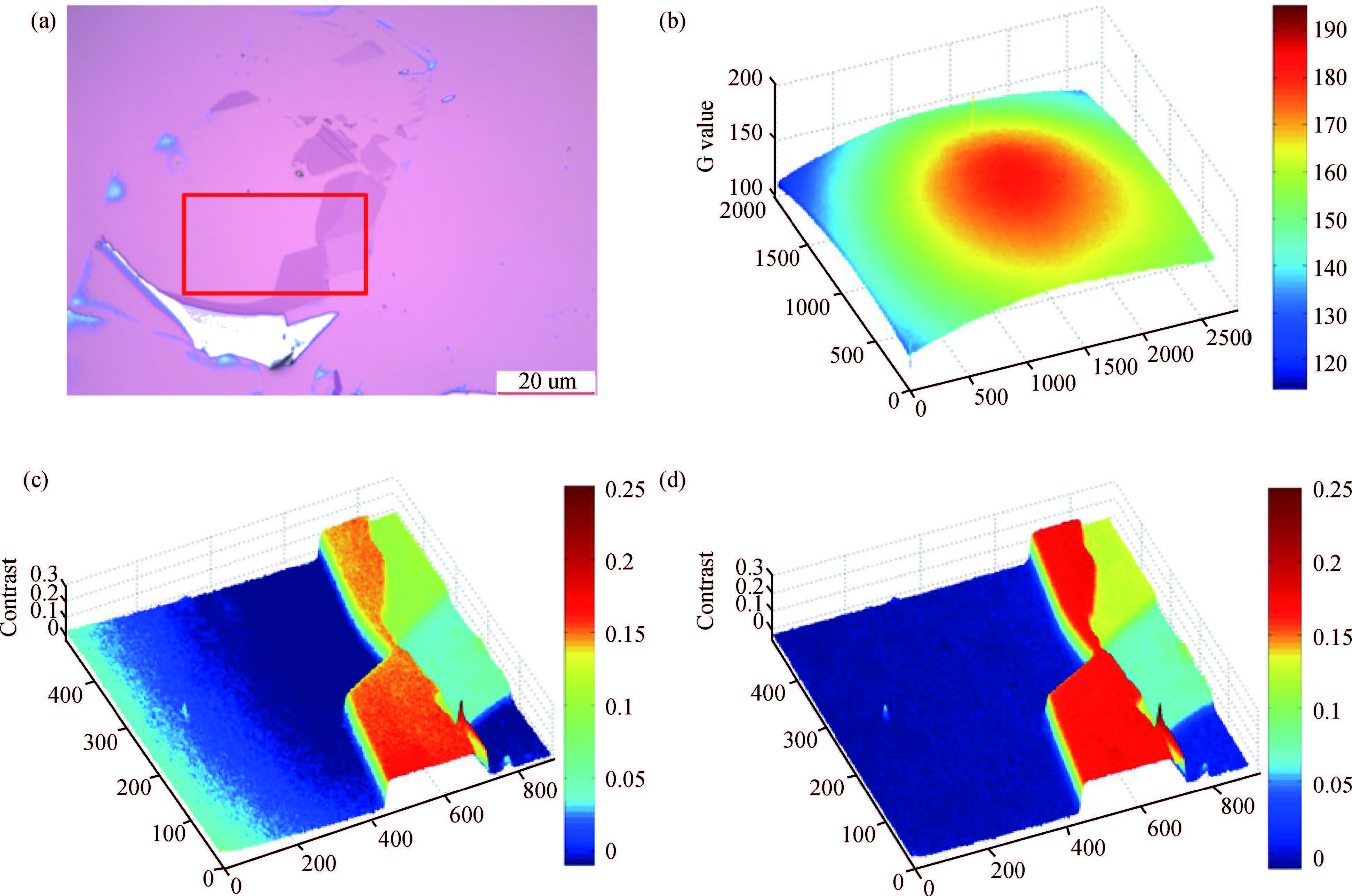
 DownLoad:
DownLoad:
